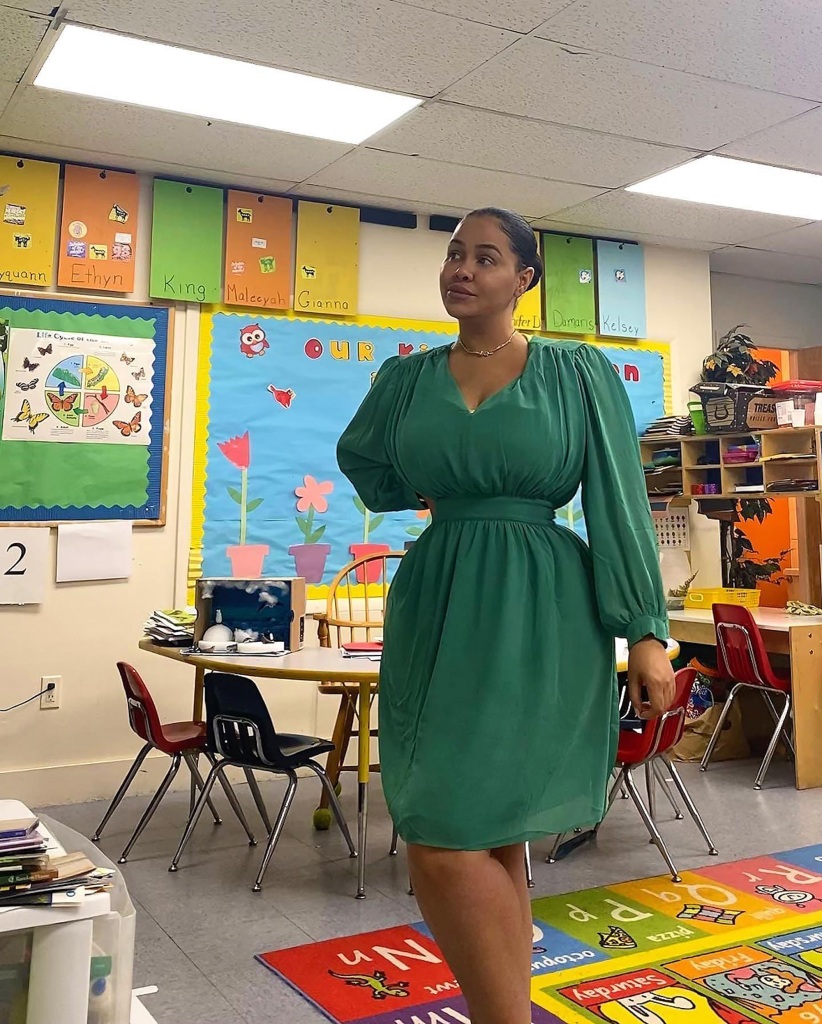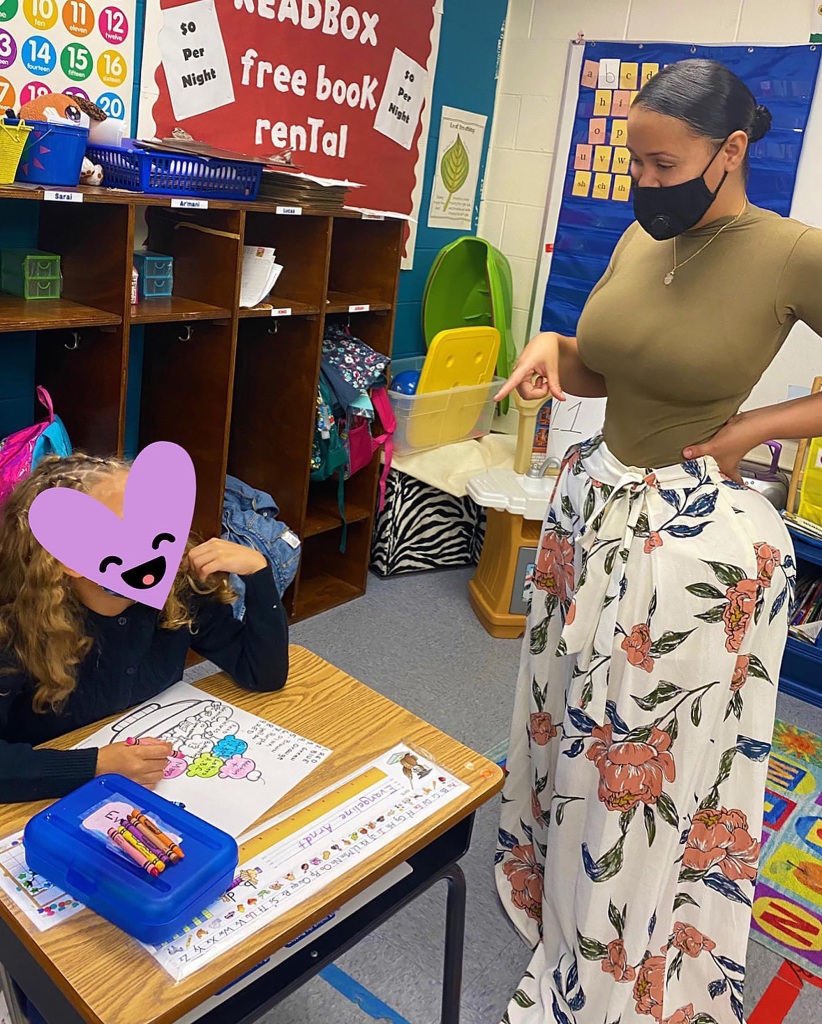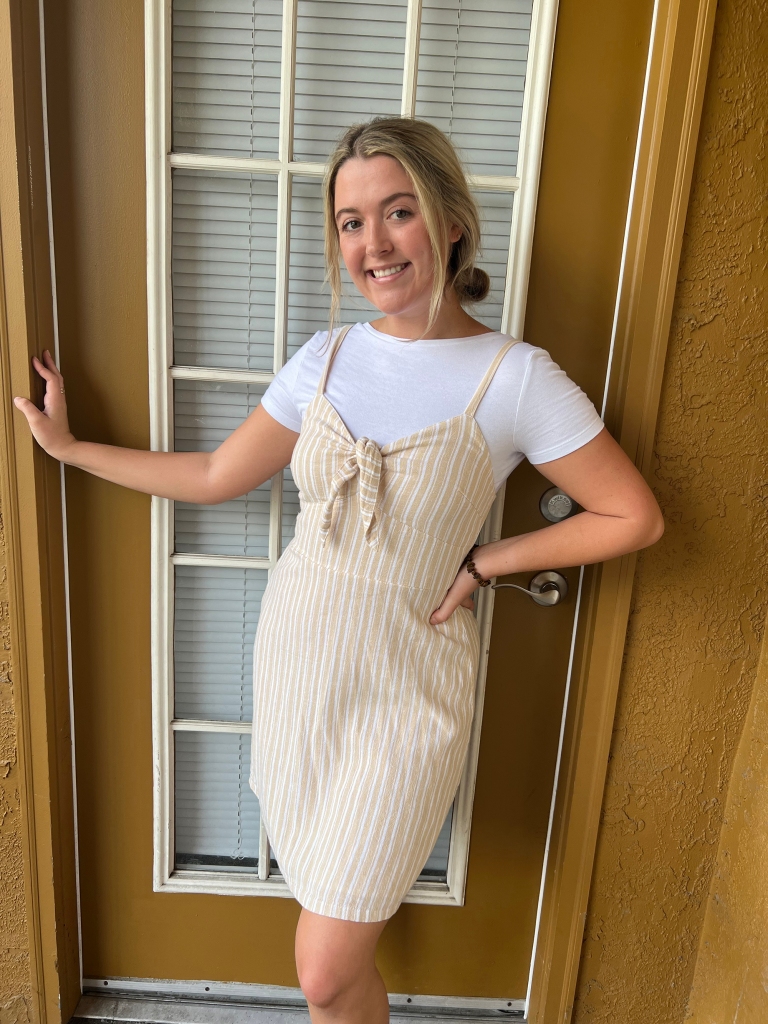Sexy teachers give critics a failing grade
At the dawn of the summer, teacher Patrice Brown received a pink slip from her employer, asking her not to return for the 2022 school year.
The curvaceous educator claims she was fired because the school’s principal took issue with her penchant for wearing skintight dresses and hip-hugging leggings.
Brown, who teaches first- and second-graders, has been gaining notoriety for her workwear for years.
In 2016, photos of her wearing skintight jeans went viral on Facebook, and she was dubbed #TeacherBae.
And in the years that followed, she hasn’t let the attention detract her from doing — and wearing — what she loves.
“I’d always go to work and take pictures of myself in the classroom setting, showing off how much I love my profession and looking beautiful while teaching kids,” Brown, 33, from Atlanta, told The Post, noting that her clothing is well within the “vague” guidelines for Atlanta Public School teachers.
It’s not just students wracking up dress code violations. Teachers are also getting written up for looking supposedly too sexy for the classroom.
New Jersey art teacher Roxsana Diaz was criticized online this week for her form-fitting outfits, with incensed moms and dads calling for her termination. She’s hardly alone.

“Teachers are often bullied [for their looks] by the administration, parents, other teachers, and in higher grades, the students,” said Brown, who has found a new job at a different school teaching first-graders. “What teachers are wearing should not be the focus. The focus should be on the kids.”
Diaz, of Pennsauken, N.J., echoed those sentiments amid her own classroom-clothes controversy via Instagram Monday.

“[Parents should] want someone teaching your children that will love and protect your children as if they were their own,” said the well-endowed art instructor in the caption of a video post to her over 987,000 followers. “I am an artist & an influencer as well as a teacher.”
Per Pennsauken Public School’s employee operations manual from 2018 to 2019, the most recently available online, when it comes to teacher apparel, “Form-fitting pants such as leggings and tights must be covered with a top reaching no higher than 4-inches above the knee.” The policy also states, “Sneakers … dungarees or jeans … excessively tight fitting clothing is not permitted.”
Saucy snaps of Diaz posed in shape-accentuating togs while leading a class full of little ones prompted digital outrage.
“You’re in a classroom taking Instagram pictures with your a – s out,” said one cyber critic under an Instagram shot of her wearing fitted jeans and sneakers with her rear to a student. “Showing pictures in the class with your butt in the air is very inappropriate!,” penned another outraged commentator.
“You shouldn’t be a teacher,” another argued.

Meanwhile, second grade teacher Madi Dew, 23, agreed that she and her fellow educators should be able to wear whatever makes them feel “cute and confident,” but she’s gone viral for transforming her sexy threads into professional looks.
“I layer,” said Dew, who lives in central Florida, and asked not to reveal her full name for privacy. “At my school, we can’t wear spaghetti straps or show our shoulders, so I put T-shirts under dresses that might be a little lower cut and I wear a lot of undershirts.”
She also loosens straps to make her dresses longer or wears a cute cardigan over frocks to hide any visible skin.
Dew, who plans to relocate and teach in South Korea next month, scored over 1.8 million TikTok views on a “how-to” video about reimagining her flirty finery into fits that often get a thumbs-up from her school’s principal.

In the clip, she shows her over 71,000 followers how she often slips a thin turtleneck under a summer slip or tosses a graphic tee over a hot little number she’d otherwise wear to brunch with friends.
Her craftiness aside, Dew believes a teacher’s passion for educating kids should outweigh what she’s wearing.
“I don’t think our clothes need to be nitpicked so much, especially when there’s a teacher shortage,“ she said.
“The focus should be on making sure schools are properly funded, that the children are getting the resources that they need and that teachers are being supported.”
Read the full article Here


